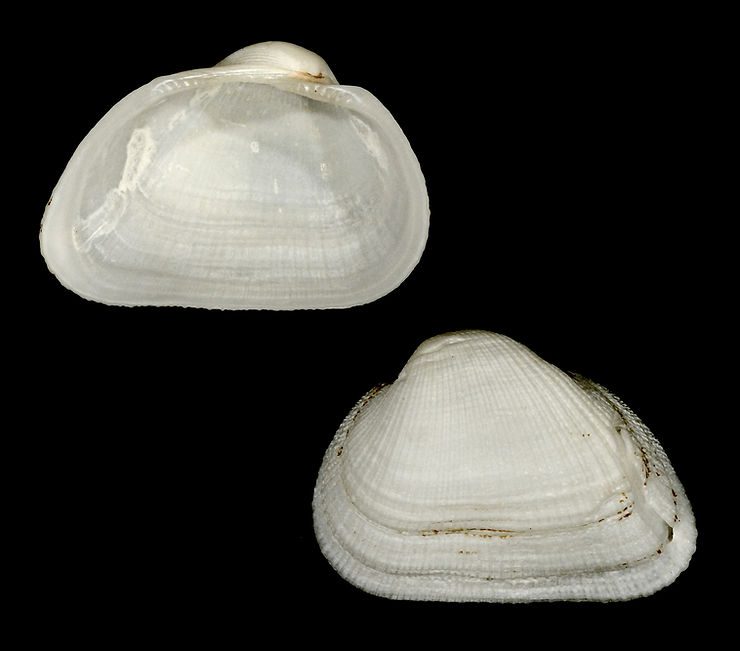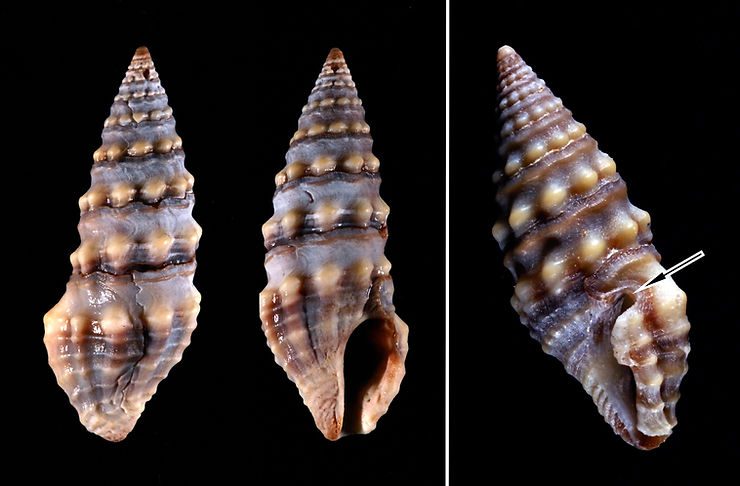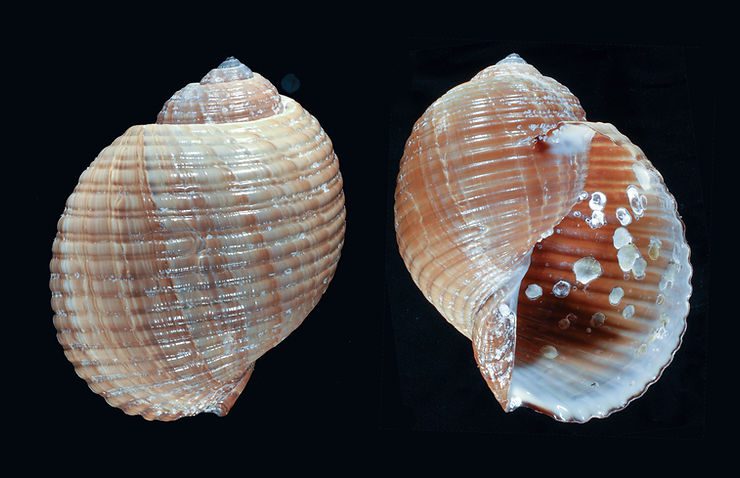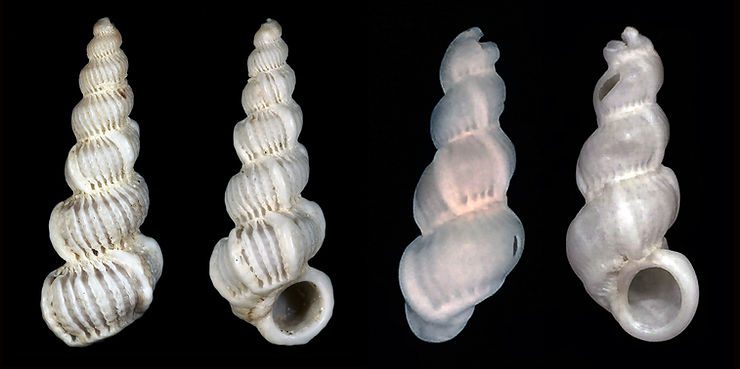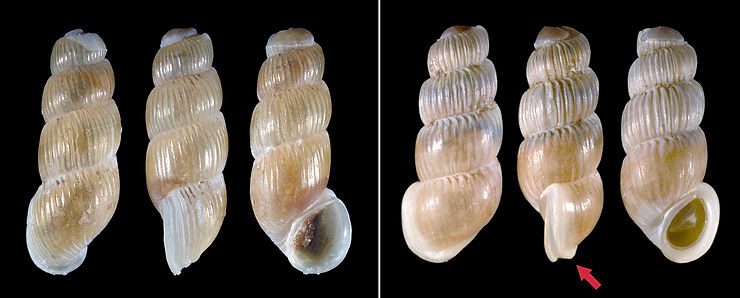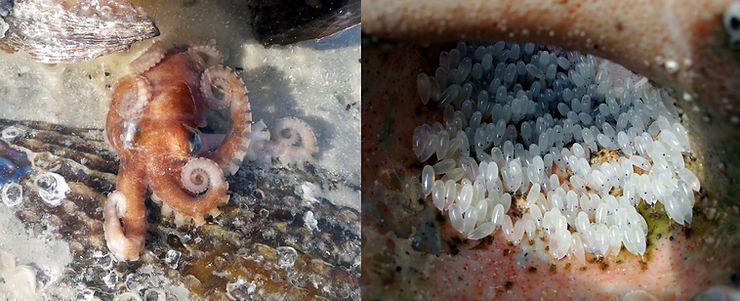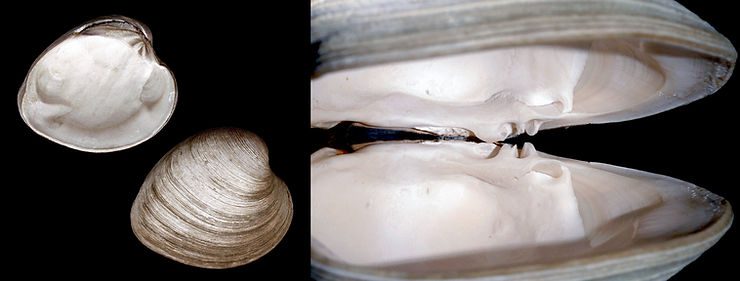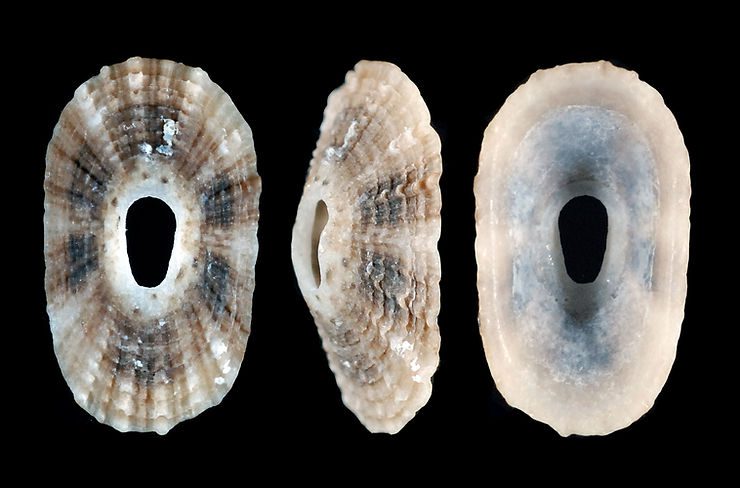
The File Fleshy Limpet
The File Fleshy Limpet, Lucapinella limatula (Reeve, 1850), is one of the three species of Keyhole Limpets (family Fissurellidae) that may be found along the barrier island of Southwest Florida. It has a relatively small shell (about 10 mm, or a little less than an inch), with a relatively large "keyhole" orifice. As in other Keyhole Limpets, the orifice helps direct waste water away from the snail's head and gills. File Fleshy Limpets have "rays" of colors ranging from red to brown set against
